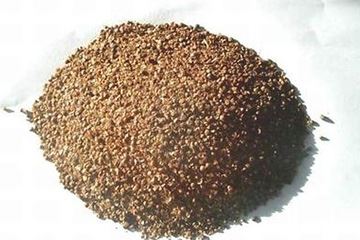
揭秘!心肌炎维C量,让你焕发健康活力
时间:2023-12-19 来源:网友分享
相关资讯
猜你喜欢
 儿童长发怎么扎简单好看
儿童长发怎么扎简单好看
随着现在很多的辣妈们都有了自己的孩子之后,特别是可爱的女儿,都想将自己的女儿打扮得美美的,儿童长发也就适应各种小美女们去打造呢!儿童长发怎么扎更加有可爱的感觉呢!而且也不会落于俗套,下面立刻来看一下。儿童长发是可爱小女生的梦想,这款齐刘海的双低马尾辫的效果
 中度贫血的症状
中度贫血的症状
中度贫血的症状 中度贫血是指血红蛋白浓度在60-90g/L之间的贫血状态。根据多个医生和医疗机构的资料,中度贫血的症状主要包括以下几个方面: 1. 一般症状 中度贫血的病人会有明显的贫血症状,包括面色苍白、头晕、头疼、心慌、胸闷。尤其在活动后更容易出现心慌、胸闷、气短的
 孩子发烧应注意四个问题
孩子发烧应注意四个问题
多补水对发热的孩子来说,首要的是水,水胜过许多好药。发热时身体出汗多,造成体内水分大量丢失,尿量减少,影响体内毒素排出,所以,多补水既有利于降温,还能使毒素及时排出体外,可酌情多喝些富含维生素的饮料如米汤、牛奶、果汁、绿豆汤等。多休息发烧的孩子应卧床休息,
 道家养生"10不过"
道家养生"10不过"
养生导读:道家养生自由一套法则。其中道家养生的10不过原则直到今天仍然对现代人的养生有积极意义。下面,我们一起来学习一下道家的10不过养生法则。 1、衣不过暖 :穿衣戴帽不要过于暖和,也不可过于单薄,过暖容易感冒,过冷容易受寒。 2、食不过饱: 吃
 减肥能吃烤肠吗?探讨烤肠在减肥中的角色
减肥能吃烤肠吗?探讨烤肠在减肥中的角色
烤肠在减肥中的角色很多人在减肥期间都会面临一个问题:能否吃烤肠?烤肠作为一种美味的食物,常常让人忍不住想要品尝。然而,对于正在追求减重的人来说,选择适合的食物是至关重要的。本文将探讨烤肠在减肥中的角色,并给出相关建议。1. 热量和营养成分首先,我们需要了解烤
 温水毛巾卸妆法 修复期精准卸妆方法
温水毛巾卸妆法 修复期精准卸妆方法
说起温水毛巾卸妆清洁法一直在网络上流传,很多人有听其名但是并不知道怎么使用,所以下面小编就教大家怎么进行温水毛巾清洁,同时还可以搭配清洁产品效果更佳。
 腐乳发黑了还能吃吗 腐乳发黑是什么原因
腐乳发黑了还能吃吗 腐乳发黑是什么原因
这个腐乳明明存放的好好的为什么等拿出来的时候发现里面竟然变黑了,难道还是存储不当的原因吗?腐乳发黑是什么原因导致的?
 慢跑是有氧运动吗 氧气含量充沛
慢跑是有氧运动吗 氧气含量充沛
慢跑是有氧运动,慢跑的速度不会特别快,在慢跑的过程中,呼吸到的氧气是足够我们身体的需求的,所以慢跑是属于有氧运动的。
 娇韵诗黄水孕妇能用吗?娇韵诗黄水怎么用?
娇韵诗黄水孕妇能用吗?娇韵诗黄水怎么用?
准妈妈们有很多都是娇韵诗的粉丝,或者正有娇韵诗它家的产品在家里还没有用完,那么孕妇能用娇韵诗黄水吗?下面告诉大家娇韵诗黄水的使用方法分析准妈妈是否可用?
 如何让小孩子开胃
如何让小孩子开胃
如何让小孩子开胃 让小孩子开胃是一个常见的家长关心的问题,通常涉及到孩子的饮食习惯、营养摄入以及生活习惯等多个方面。以下是根据搜索结果提供的一些建议和方法: 1. 调整饮食结构 根据搜索结果,小孩子开胃可以通过调整饮食结构来实现。例如,可以增加孩子的蔬菜水果摄入
 紫苏子有毒吗 使用过量会产生轻微毒素
紫苏子有毒吗 使用过量会产生轻微毒素
都知道任何食物都有自己的食用禁忌,通常情况下,有大多数食物在使用过量后都会有相对应的副作用。这些副作用往往变现为不同的形态,那么紫苏子有毒吗?
 爸爸去哪儿5候选实习爸爸人气榜,实习奶爸黄景瑜任嘉伦窦骁(前三)
爸爸去哪儿5候选实习爸爸人气榜,实习奶爸黄景瑜任嘉伦窦骁(前三)
《爸爸去哪儿》一直是芒果台的王牌综艺,官方给出说明称今年8月,6组星爸萌娃正式出发。而在此之前,芒果台官方搞了个候选人的大型投票,征集大家期望看到的嘉宾,有望加入第五季。(

 腐乳发黑了还能吃吗 腐乳发黑是什么原因
腐乳发黑了还能吃吗 腐乳发黑是什么原因